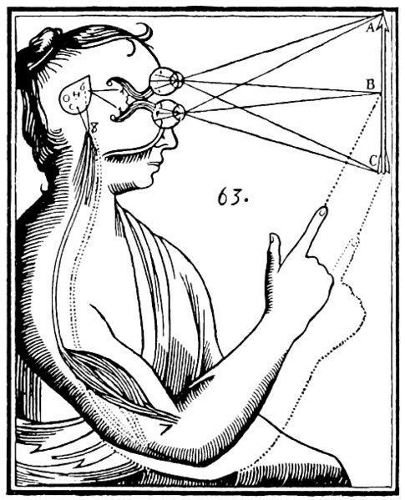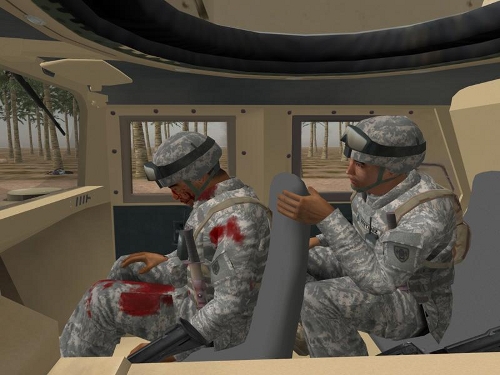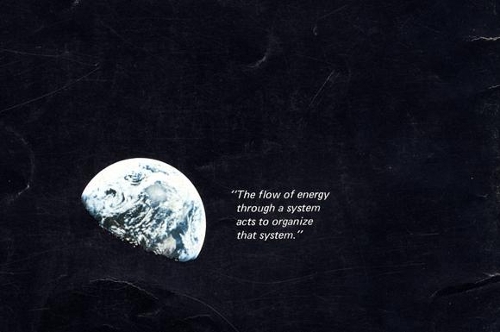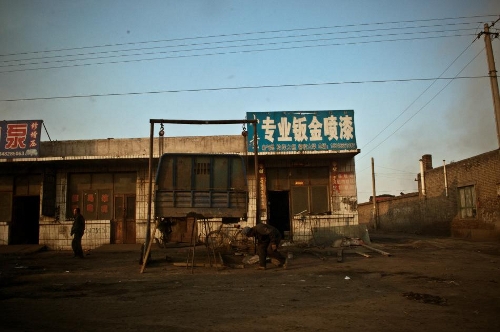Human Resolution
Harry Sanderson reflects on the economy of networked image commodities and the chains of labour which underpin their appearance
There is a relation, largely avoided and unexplored, between the ubiquity of digital commodities, and the capacity of these devices to reproduce and maintain a necessary insouciance towards the exploitation and violence required for their continued production.
the principles governing the world of the soft – the world of intangibles, of media, of software, and of services – will soon command the world of the hard—the world of reality, of atoms, of objects, of steel and oil, and the hard work done by the sweat of brows.1
The effects of the ‘digital revolution’ have been analysed for the most part in terms of their effects on individual consumers, rather than from the perspective of the pressures exerted on those charged with their production. This essay will adopt the position of being reduced to a component in a process to look at the coercive and objectifying structures that technology enacts upon human bodies. As ‘an object in the midst of other objects [...] Sealed into that crushing objecthood’.2 Or, as Paul Virilio writes, ‘people used to die for a coat of arms, an image or a pennant or flag; now they died to improve the sharpness of a film’.3
A key aspect of the problem, particularly for art, is the widespread aesthetic conception of digital technology and its effects as disembodied and immaterial.4 This is exacerbated by its increasing invisibility.
As technology becomes ubiquitous it also becomes invisible. […] If the information revolution succeeds, the standalone desktop computer will vanish. Its chips, its lines of connection, even its visual interfaces will submerge into our environment until we are no longer conscious of their presence.5
We see this today in the ways that smart phones, GPS, and access to unlimited data now occupy such central positions in relation to the organisation of work and leisure, and that access to these tools is increasingly presented as an inalienable right.
Video: Sprint iPhone data advertisement.
This reflects the dispersion of military research projects into the ambience of daily life, and has contributed in turn to the dematerialisation of the personhood of the worker and the means and cost of production. Relating a Google search return to an equivalent expenditure of fossil fuels, or the fluctuation of pixels across a screen with the exploited labour of rural migrant workers in Shenzen, or topsoil loss in Inner Mongolia, is as remote and unattainable for the majority of users as is an understanding of the technical functionality of the devices themselves.6

Image: Rare Earth Production
It is not necessary to argue for artistic engagement with digital technology. It is fundamental to contemporary experience, and art that wishes to bear relation to such is compelled to take up similar tools. The question is whether or not it does so with cognisance of the provenance of these tools as forms of military surveillance, as instruments for the intensification of production, and the reproduction of late capitalist ideology: ‘communicative capitalism’.7 It must enter into resistance towards the ‘rationale of domination’8 which constitutes the history, development and implementation of these tools in the world, rather than persisting in an attitude of wilful blindness towards their ‘deepening of […] and dependence on - the social and racial polarisation of the society from which [they are] born’.9
In this way we shall perceive that the nature of matter, or body in its universal aspect, does not consist in its being hard, or heavy, or coloured, or affecting our senses in some other way, but solely in its being something extended in length, breadth, and depth. For as regards hardness, we do not know anything of it by sense, except that the portions of the hard bodies resist the motion of our hands when they come in contact with them […].10
The materiality of the digital image and of most computational processes is made possible by the Cartesian coordinate system, the product of an intellect, that drew the distinction between mind and body, and implied the mastery of one over the other.
In order to understand the structure of indifference that technology engenders towards the body, we must understand the importance of Descartes’ creation of the mind/body duality in valorising of the products of intellect, and its role in a denial of personhood to the 'body' of those converted into objects in the name of profit.
The computer and the network, emerging from this philosophical locus, can be seen as concatenations of violent power structures borne by the amputation of the intellect from the body, and obscured by digital form.
As Joan Dayan writes, ‘Descartes’ methodical and metaphoric [dismemberment] becomes the basis for the literal expropriation and dehumanisation necessary to turn a man into a thing […] the enlightenment strategy by which humans ruled the universe of things, including, through a fantasy of reification, slaves’. She goes on to say that, ‘The making of enlightenment man led to the demolition of the unenlightened brute, [and allowed] the thinking mind's destructive or generative proclivities [to dominate] a passive or servile body’.11
These insights explain the subtle disdain intoned by Kelly as he speaks of ‘the sweat of brows’, and are confirmed by Anna Munster, who has explored the persistence of the cogito in digital culture.12 She notes that, ‘the aesthetic effects of the dominance of the Cartesian coordinate system were oppressive. […] digital spaces were [/are] subtended by a strong desire for control over the messiness of bodies and the unruliness of the physical world.’13
If these dualities persist as the foundations of technological philosophy, then it follows that the cognitive effect of digital commodities on individuals will act to reproduce and deepen these divisions, and bring about immunity on the part of the user in apprehending their relationship the costs of digital experience. On the basis of Dayan and Munster’s claims, it is possible to view Descartes’ division of the self as both the source of perception of the digital as incorporeal and as providing the moral basis by which real people are enslaved by mechanisms that re-enact global sociological structure.

Image: Feedback
The optoelectronic channel will be immunized against disturbances that might randomize the beautiful patterns of bits behind the images and sounds. […] Sound and image, voice and text have become mere effects on the surface, or, to put it better, the interface for the consumer.14
The advent of wireless mobile devices and user-generated content has rendered the 'optoelectronic channel', to which Freidrich Kittler refers, an anachronism. However, his observation regarding the intersection of the senses, particularly of touch, and ‘prosumptive’connectivity via the technological interface; now augments life in all aspects, invisibly and everywhere.
This application of technology is one where a distance is produced and maintained. The notion of ‘prosumption’ (in which consumers produce) and faith that the internet has a de-centralised nature, acting as a forum to promote democratic exchange, fail to acknowledge that communications technology has emerged from a reciprocal relationship of investment and research between the US military and the entertainment industry.15 Aside from this fact of provenance, there is also the question of endless mutability. The understanding of ‘infinite exchange’ – that the transformation from one 'thing' to anything else is simply a matter of the reorganisation of data.16
In Franco ‘Bifo’ Berardi’s book After the Future, he emphasises what he sees as the transition from a ‘conjunctive’ mode of experience, characterised by corporeal interaction, to a 'connective' mode that characterises digitally mediated cognition.
The context of my understanding of present [moment] is the transition from a realm of conjunction to one of connection, […] the emergence of the first connective generation, those who learn more words from a machine than a mother. In this transition, a mutation of the conscious organism is taking place: to render this organism compatible with the connective environment, our cognitive system needs to be reformatted. This appears to generate a dulling of the faculties of conjunction that had hitherto characterised the human condition.17
In ‘Virtual Iraq’ – a VR platform developed by the US military using technology closely based on commercial video game engines – traumatised soldiers replay their experiences whilst wearing a VR headset and full military uniform. This practice has become, alongside remote drone pilots in Nevada, the subject of much uneasy speculation about the proximity of military investment to leisure practice, and is the subject matter of artistic works such as Harun Farocki's Serious Games, 2009.

Image: Nevada, Immersion
Pasi Väliaho, writing on the psychological efficacy of the treatment, and considering its political advantages, asserts that;
(CGI) images cease to reflect the external world and get enclosed within the organism’s internal milieu, folding perception back into the subject’s endogenous apparitions instead of extending perception outside itself. […] The technology’s efficacy is [..] articulated in terms of how the patient becomes affectively ‘immersed’ in or ‘synchronized’ with the virtual environment.18
This analysis can be extended to the cognitive affects of CGI and interfacial modes of experience that digital commodities effect in civilian society, and their role in ‘modulating […] affective life’ in the creation of a de-politicised subject.19 The user internalises a distance from corporeal reality as they are progressively enveloped by a field of potential interactions and relationships.

Image: ‘Soft’ Memory
Kelly’s prediction on the importance of 'miniaturisation' now verges on complete symbiosis with our perceptive faculties. As Berardi observes,
Central to this mutation is the insertion of electronic devices into the organic, the proliferation of artificial devices in the organic universe, in the body, in communication, and in society. Therefore, the relationship between consciousness and sensibility is transformed and the exchange of signs undergoes a process of increasing desensitisation.20
The interface always points outwards, away from conscience and culpability, pointing instead toward the potential of financial reward, the embrace, and empowerment granted by total connection. What seems initially to direct us outwards to the world, such as a proliferation of global communications, in fact directs us toward ever more contracted and systematic interactions.

Image: Augmented Reality
After the equation of body with machine comes the equation of the machine in symbiosis with, and as an expression of the inalienable rightness of Nature. To understand how this occurs, we must appreciate the unity of word and image in forging connections which flatten and obscure domination by equating it with self-organising ‘flows’ and ‘energies’, attempting, through obfuscation and metaphor, to suggest that these relations are something other than ‘the triumph of invested capital, whose title as absolute master is etched deep onto the hearts of the dispossessed on the employment line’.21

Image: Beginnings. Stewart Brand, Whole Earth Catalogue, 1968
'The flow of energy through a system acts to organise that system'. These words, originally from H.J. Morowitz, appear on the back cover of the first edition of the Whole Earth Catalogue alongside a reproduction of William Anders’ photograph of the Earth from the surface of the moon.22 Inspired in part by the photograph, Brand conceived the publication with the goal of disseminating ‘access to tools’ to expedite the creation of an ‘ecotopia’ spanning national borders in collaboration with, rather than in opposition to, new technologies of communication and representation.
Represented at a distance, the Earth functions for the first time as a ‘new universal metaphor’ for the description of power and the organisation of labour in ameliorative terminology such as ‘flow’ and ‘system’.23 This abstract conception of capital as an organic component of a natural process implies that the manner in which this 'system acts to organise' itself will reflect the balance of the natural world, and therefore provide a moral basis for the organisation of human society.
Symbolism and metaphor function here without the need for confirmation or referent. They exploit the unity of word and image to forge ‘connective vocabularies’ which are adopted uncritically by merit of their elegance and ‘compatibility’. As Hito Steyerl notes, ‘There is a magic affinity within the word itself [...] the force of similarity works from within it. [Reaching] across difference to uncomfortably approximate situations that are otherwise segregated and hierarchized by tradition, interest, and privilege.’24
The readiness of users to accept ideologies that obscure the realities of globalisation reflects not only the desire of individuals to remainin informationally ‘compatible’ with global power structures, but also an overestimation of the capacity of images to divest themselves of their history.

Image: Access
The image of the ‘Whole Earth’ was perceived by Brand as representing the potential for a definitive break with previous ideologies, and for the creation of new, trans-national formulae for society. However, committing to this belief required that Brand and his followers ignore the markedly national interests that constituted the image’s actual provenance, namely the need for increased US military surveillance during the Cold War25, and the relationship of photography to representation and ownership. Alessandra Raengo writes; ‘because of photography’s ability to function as a general equivalent in the realm of visual representation. [it constitutes] a form of appearance of capital’.26 With this insight in mind, it becomes less surprising that the expansion of American military power of which this image is a result, has acted only to empower ideologies that aid in the consolidation of that power and obscure visibility of its consequences.
These ‘machines of the visible’, or as Virilio would say 'weapons that make things visible' produce and confirm ‘connective mutations’ that uncritically accept and obscure the persistence of coercive power structures, and inscribe themselves instead in seductive analogies of 'natural balance'.

Image: ‘Balance’
The iconic power of homeostasis in maintaining a distance from the realities of production, despite its having been long rejected by ecologists, is not lost on contemporary theorists and corporations. Both Apple and Google are pursuing 'sustainable' solutions in response to the problem of data storage, with Apple constructing huge solar farms and Google drawing server power from the Colombia river, redirecting the flow of rivers to power its own organisation of the 'river of information'. In both cases, and particularly with regard to solar panels, their use is largely symbolic, but as Kelly points out 'that is the unseen revolution' a process whereby that which is incompatible is simply ignored in favour of that which appears harmonious.
Here, Manuel De Landa exemplifies a kind of thinking that is able to characterise structural inequalities as natural phenomena and arrives, via an abuse of metaphor, at a position of ‘reflexive impotence’ regarding the effects and costs of technological expansion. He writes, ‘rivers [act] as veritable hydraulic computers (or at least, sorting machines)’. In the presentation of this metaphor, De Landa posits the various sedimentary processes that make up the earth's crust as sharing characteristics with the construction, or 'sedimentation' of social classes, or ‘strata’ as he prefers to call them. De Landa defines these 'strata' as applicable ‘whenever a given society presents a variety of differentiated roles to which not everyone has equal access, and when a subset of those roles (i.e. those to which a ruling elite alone has access) involves the control of key energetic and material resources’.
As we follow his metaphor further, 'we quietly arrive at the notion' that, by the same token that rivers 'compute' rocks according to size and mass, so Google's servers organise and sediment images, people, places, products and social relations according to importance and individual value. The danger of this notion is not only that it attempts to provide natural basis for class, but that it exploits public perception of nature as immutable, and thereby legitimises the notion that if class-structure can be shown to have indexical relation to various processes in nature, then this can be taken as an affirmation of its rightness. To liken the flow of rivers to the flow of information, and the sedimentary processes that form the earth's crust to the structuring of social and economic class is to invoke the natural world and the very substance of the earth as evidence of the immutable fact of global inequality.
As De Landa acknowledges, ‘This conception of very specific abstract machines governing a variety of structure-generating processes not only blurs the distinction between the natural and the artificial, but also that between the living and the inert’ and, through reification, results in a situation whereby ‘the structures generated cease to be the primary focus and instead, matter-energy flows acquire this special status.’ By his own admission, ‘living creatures, according to this stance, are no better than rocks’.
The Cartesian cogito plays an important role here in delaying apprehension of the realisation that the 'physical realities of data are far from the mythology of the Internet' (Glanz, 2012). The dehumanising aesthetics of instantaneous connection are carried out not just on the basis of the technology's Cartesian foundation, but also with regard to its endless mutability – whereby the transition from one thing to another, from rocks to layers of the earths crust, and from people to products, each “no better” than the other, is simply a matter of the re-organisation of senseless 'bits'. ‘Exchange’ or ‘matter-energy’, is an anti-inflammatory for the exploitation of human and natural resources.
In The Medium is the Message, Marshall McLuhan asserts that new technologies, rather than overturning or radically changing old structures instead ‘(accelerate and enlarge) the scale of previous human functions’.27 The contemporary face of technological production – as can be seen in the labour conditions at Foxconn and Wintek, in the ‘e-waste’ dumps of Ghana, and the mines of Democratic Republic of Congo (Monbiot, 2013) and Inner Mongolia – attest to the continuing 'acceleration' of these violent and destructive ‘functions’. However, the notion that these traits persist as a reflection of the technology itself is only true as long as it continues to be produced with these aims in mind, and with the domination of mind over body at the base of its philosophy.
Hito Steyerl presents us with an alternative model, where, in a landscape of ubiquitous representation, speed and resolution have emerged as new determining factors of citizenship, with the highest speeds and resolutions available representing the current ideal. As a result of this standard, she writes, there also exists, ‘a growing number of unmoored, floating images [corresponding] to a growing number of disenfranchized, invisible, or even disappeared and missing people’.28 In the following example we will see how the coercive force of digital exchange acts to curtail and enclose individuals both in the physical world, and in the virtual worlds that have emerged in new virtual territories.
As connectivity widens its scope, transcending national borders and economically polarised populations, digital reproductions of problems associated with globalisation and capitalism continue to appear. One such example is the 'phenomenon' of gold-farming and real-money trading (RMT) in online virtual role-playing games (MMORPGS) such as the hugely popular World of Warcraft (WoW).
With official subscriber numbers at 9.6 million, and the gross annual product (GNP) of all virtual goods being estimated at around 6 billion US Dollars, the geographically diverse uptake of MMORPGS such as WoW has resulted in the emergence of a real economy based on the exchange of virtual goods.29 As a result of international RMT, virtual objects now correspond to significant real world values, and thereby subject players to international exchange rates, resulting for many in the co-option of leisure into work. Sites such as IGE.com facilitate the exchange of these virtual goods, and, in 2004, a court in Xuhui filed in favour of the 'property rights' of a player whose 'magic sword’ had been deleted by the game operators, resulting in compensation of 1000 Yuan (US$120).30

Image: World of Warcraft ‘Sweat-shop’
In China, the emergence of this economy has lead to the emergence of ‘virtual sweat-shops’, and, in some cases, with virtual work being added to, or entirely replacing manual labour in China's many prisons, such as Jixi labour camp in Heilonjiang.31

Image: Unknown source
The scope of WoW’s international user base provides us with an image, rendered computationally, of the effects of global digitalisation. It seems, so far, that the tendency of virtual worlds is to reproduce the adverse effects of the possessive individualism upon which they are built, no matter what excursions into utopia they might have enjoyed. The ‘digitally embodied communities’ (Nakamura) of WoW, or SecondLife are both a product, and a working model for, ‘informationalised’ global capitalism, and can be, in fact are used (by epidemiologists and ‘anti-terrorism officials’) to examine the manner in which power 'constitutes itself' in relation to value, disaster and scarcity.32
Lisa Nakamura has written on the practice of gold-farming, with particular focus towards the overt racism displayed by Western players towards Chinese players. She suggests that, ‘If late capitalism is characterized by the requirement for subjects to be possessive individuals, to make claims to citizenship based on ownership of property, then player workers are unnatural subjects in that they are unable to obtain avatarial self-possession.’ And that the ‘profiling of Chinese labourers [gold farmers] is part of a larger biometric turn initiated by digital culture’s informationalisation of the body’ subtended, as we have seen, by a post-Cartesian desire for control over the ‘messiness’ of the physical.33
![]()
Image: Machimina / Avatar Racism
From a Cartesian perspective, the existence of the personhood of the other has never really mattered. It is simply a matter of establishing a criterion whereby what is not immediately related is met with denial. This happens necessarily and serves a purpose. The humanity of the slave or of the other is considered as expendable because its existence does not amount to enough capital to qualify for consideration. What does not fall into the culturally and economically commensurable – is immediately and by definition expendable.
Where direct exclusion from access is no longer applicable, leisure, and comparative access to it step in as determining factors in stratification of labour value and access to leisure. This ‘phenomenon’ affects a new form of alienation produced through the commodification of leisure and the digitalisation of the body, a tenement of the self.
[T]he alienation of labor manifests itself to the laborer in that this labor does not belong to him, but to someone else; […] the activity of the laborer is not his own activity. It belongs to someone else, it is the loss of his self.34
Just as technology has rendered production and physical labour remote, so a certain kind of 'virtual' labour becomes a new, ‘self-organising’ mechanism whereby new economies are created on a basis of exploitation. The fact that something is 'virtual', has precisely no effect on its capacity to attain real value, or to generate real suffering.
![]()
Image: Avatar Funeral
WoW can show us how value exerts pressure on the freedom and autonomy of human subjects. We can observe in the image of virtual labour the structural tendency of digital representation to re-produce atavistic and violent traits of its past as new formulations and variants within its own representational language. Alexander Galloway’s assertion that ‘virtual worlds are always in some basic way the expression of utopian desire’ is supplanted by Theodore Adorno’s observation that, ‘leisure under late capitalism is the prolongation of work’.35
Sometimes I hear viewers saying, while looking at [the work] ‘I can’t look at this, I must not see this, I’m too sensitive.’ This is a way of keeping a comfortable, narcissistic, and exclusive distance from today’s reality, from the world. […] The discourse of sensitivity – which is actually ‘Hyper-Sensitivity’ – is about keeping one’s comfort, calm, and luxury. Distance is only taken by those who – with their own eyes – won’t confront the incommensurable of reality. Distance is never a gift; it’s something taken by very few to keep intact their exclusivity.36
Thomas Hirschorn’s Touching Reality (2012) consists of a shot of a finger scrolling through photographs of mutilated corpses on a touch screen. Rather than dealing with the economy of this ‘genre’ of images and the companies that deal in them, or with their monetary value, (as in Seth Price’s, Digital Video Effect: Holes, 2003) Hirschorn instead attempts to confront the alienation, haptic and emotional lack provoked by encountering them in a specific, particularly luxurious technological context.37 The work evokes, in its use of authorial perspective, the assumption that the finger belongs to the artist and thereby aligns itself with the canon of conceptual art where the artist ‘picks’ things from the world and imbues them with value.38

Image: Thomas Hirschorn, Touching Reality, 2012.
Of course, this action, when performed on innumerable dead humans has deliberately problematic implications, both for the artist and the viewer, and that is where the work succeeds in confronting the distantiating effects of technology that this essay attempts to discuss. As Claire Bishop writes,
the endlessly disposable, rapidly mutable ephemera of the virtual age and its impact on our consumption of relationships, images, and communication [...] articulates something of the troubling oscillation between intimacy and distance that characterizes our new technological regime, and proposes an incommensurability between our doggedly physiological lives and the screens to which we are glued.39
The tactic adopted by Hirschorn, where the artist inhabits and performs conditions of alienation and violence – with the stated goal of exposing the proximity of technology to their continuation – compels us to ask at what point performative ‘complicity’ dissolves from subversion into another instance of the exertion of power and privilege that it attempts to critique. By the same token that saw conceptualism dissolve the boundaries between art and life at the expense of the status of the artwork, the political work, as executed through technology risks reflexive dissolution into a reification of the conditions that allow for its existence.
The aestheticised conception of a finger brushing against the surface, ‘of mere affects on the surface’ is brought into focus by the use of N-Hexane in the manufacturing of iPad screens.40 N-Hexane is used in polishing the screens to achieve the experience of seamless interaction to which Hirschorn responds. The chemical is highly toxic and causes widely reported incidents of blindness and paralysis. Hirschorn's work does not understand the object itself, and if we understand this process as part of the production of the interaction between fingertip and dead-image that affects this alienation, then his deployment of anonymous violence is called into question when we think in terms of the human cost already embodied in the specific surface of the object itself.
The work's most interesting aspect is in the tension between the words 'touching' and ‘reality’, and the proximity of the redundancy of these nouns to the sensuality of the haptic gesture. There is a deeply troubling interplay of leisure and death. As Hirschorn observes, ‘It’s about making war acceptable and its effects commensurable.’41
Ken Jacobs Capitalism:Slavery (2006) consists of a stereographic photograph retrieved from the American Library of Congress. It depicts slaves at work in a cotton field. In the centre of the image is a young girl, and in the distance an overseer with a rifle can be seen on horseback. The film makes use of rapid alternation of views to activate the image’s depth, with black frames inserted to create a strobing effect that evokes the transmission of a signal, and creates a sense of rotation around a static point in history.

Image: Ken Jacobs Capitalism:Slavery 2006
While Hirschorn’s work attempts to illustrate the distance and alienation of the technological interface, Jacobs makes subversive use of digital technology's transformative jurisdiction over the photographic image, to re-animate and disrupt the tendency of representation to fixate and fossilize history.42 The process by which the photographic moment, along with the power relations contained in it, are consigned to comfortable distance as archival documents from the ‘distant’ past.
In using technology to extract depth from the historical document, Jacobs demonstrates how machinic representation can be repurposed to expose its own oppressive structures. Using the position of being reduced to an image as a location from which to look at technology, from a standpoint not insulated by its seductive power, and instead grasp the ends to which it has been and is employed. It displaces and confronts what Kittler described as those ‘beautiful patterns of bits’ across the surface of the interface to our senses – and those moments in our history that we keep distant in order to maintain our countenance.43
Alessandra Raengo describes Jacobs’ work in these terms;
Jacobs’ film travels the distance between reification and reanimation through the flickering effect obtained by its digital manipulation. […] While the stereographic card fosters the involvement of the viewer’s body in the form of a prosthetic presence in the image, through the illusion of depth, it also keeps it at a distance […] it is the unequivocal separation between the haptic space of the image and the body of the viewer.44
The body that the viewer of these works is made to inhabit is one made artificially separate from the destruction to which it bears witness. In Jacobs’ words the film is ‘silent, mournful, brief’.45 Whereas Hirschorn deliberately compounds this affect in order to perform it more explicitly, Jacobs’ manages an innovative, simple and effective response.
By way of summation we now turn our consideration to one final example; Arirang, North Korea's annual display of mass gymnastics in Pyongyang.
A central component of the show is a ‘living screen’ formed of 20,000 performers who act in place of pixels.46
It is an awesome product of political control and economic weakness. Starved of energy, and economically retarded, the only resource North Korea has in abundance is its people – and they are often employed in places where richer countries would use electricity.47
Its use of mass synchronisation, reflects not only the relationship between individual, society and machine, but also, as a result of North Korea’s isolation, a negative image of the manner in which representation is constructed throughout ‘the rest of the world’.
![]()
Image: People As Pixels / Human Resolution
In an essay that examines the evolution of mass gymnastics and its use in propaganda and the regimentation of authoritarian regimes, Petr Roubal relates the structure of the stadium to Foucault’s panopticon and the creation of a disciplined and compliant body. He writes,
The concrete structure of the stadium surpasses the one-dimensional panopticon in its all-dimensional character […] Instead of prison walls isolating one inmate from the other, there was on the field of the stadium an invisible geometrical grid, which determined the position of each and every gymnast. A gymnast standing on his mark in the stadium was no longer part of the masses, but became an analytical unit, an intersection of axes x and y, which could be directed, controlled and analyzed from any point in the stadium.48
The term ‘analytical unit’ and of ‘axes x and y’, corresponds to the mathematics of Cartesian coordinates and allows us to describe regimentation and control in terms of technological ‘addressability’. Much like the physical coordinates of the pixel on a screen or the IP address that broadcasts a traceable location. Roubal goes on to state, in concurrence with Joan Dayan's observations regarding the enlightenment, that,
Rather than being an invention of the communist regime, mass gymnastics shared with it some common roots in the rationalism of the Enlightenment. The social rather than political history of mass gymnastics starts with that same equation of body with machine, which constituted the basis for the modern military drill or working process. The rationality behind the technique of the performances was the same as that behind the working process or military drill but the final goal was different. It did not aim at greater efficacy but greater effect.49

Image: ‘Synchronisation’
This observation is key if we are to understand the manner in which Arirang allows us to see the importance of representation and resolution in relation to how people are employed by the demands of high-technology. To understand how addressability and the Cartesian axis tend to the reduction of individual personhood, or lead, as Kelly puts it, to the notion that the already objectified ‘its’ are now ‘bits’50 we need only refer to the definition of the pixel (picture element):
In digital imaging, the pixel is a ‘a minute area of illumination on a display screen’ (Oxford), a physical point on a raster image, or the smallest addressable element in a display.
To adopt technical language is in many cases the best way to describe how technology intensifies social power in its own image, and in its relation to the individual, their agency reduced to the smallest possible element within a given society, fixed at a certain point, with personhood denied, postponed subject to the fulfilment of quota.
Foucault’s panopticism describes the intersection of bodily discipline and the importance of visibility in the maintenance of social control. Visibility, as he says, ‘is a trap’.51

Image: Google Server Farm
Foucauldian readings of the Internet have been extensively explored, and indeed his formula for describing the manner in which representation and visibility act as mechanisms for social control can be accurately applied to their contemporary effects. Here however, the focus is to a lesser degree concerned with how his theory may be used as a ‘diagram of a mechanism of power reduced to its ideal form’ but with how resolution, conceived of as a ‘unitary technique by which the body is reduced as a “political force”’ is carried out despite power, especially with regard to North Korea, functioning to produce an image of unity and order – behind which the vast majority of citizens are invisible. 52
Foucault’s reading of the panopticon assumes an affinity between mechanisms of control and profitability and in the context of North Korea these observations loose some of their focus and clarity. It is clear that the manner in which Arirang presents social control does not embody the least cost and maximal useful force. It does however reveal that the need for representation and resolution acts as an absolute drive regardless of the actual state of the society that it represents.
In North Korea people replace integrated circuits and pixels. It is by this substitution that we are able to see the greater abstraction of power, of the reach of resolution as a standard, and its effect on those made subject to its construction.
Alessandra Raengo, compares the stake of photography to that of medieval kings, stating ‘medieval political theology posited that the King has two bodies, a body natural and a body politic, a body mortal and a body artificialis’ this, she argues, in response to the problem of regal mortality medieval theologians constructed a sublime form that could outlive the truth of monarchical mortality.53
Using this example, and having drawn comparison between Marx’s position regarding money as a universal equivalent, and the social uses of photography to establish and maintain distance, Raengo suggests that representation too might have two bodies, ‘and that, by functioning as the general equivalent, its sublime body is in fact the reification of the social relations that sustain it.’54
As Benjamin Bratton observes, ‘one persistent irony of Modernity’s auto-technologization is that as the capacity for very high resolution representations of worldly space scales quantitatively, our own individual and collective abilities to comprehend and access the world as a coherent situation correspondingly wane.’55
This essay ends with two quotes. One, from ‘The Californian Ideology’, describes the use of technology in mediating the relationship between what we have referred to as the ‘spoils’ and cost of production. The other, from Giles Deleuze, goes some way to explaining my position as regards the role of art and culture more generally, in response to the kinds of experience that digital commodities afford us.
In ‘The Californian Ideology’, Richard Barbrook and Andy Cameron attack the neoliberal politics of Silicon Valley’s digital entrepreneurs for their unquestioning relationship to their own privilege, and towards American history, particularly in their idolisation of Thomas Jefferson. They point out that, in addition to owning over 200 human beings as slaves whilst declaring the truth of equality and inalienable rights to be self-evident, Jefferson also displayed an understanding of the capacity of technology to obscure some of the inconvenient realities of economic development:
Jefferson invented many clever gadgets for his house, such as a dumb waiter to deliver food from the kitchen into the dining room. By mediating his contacts with his slaves through technology, this revolutionary individualist spared himself from facing the reality of his dependence upon the forced labour of his fellow human beings. In the late-twentieth century, technology is once again being used to reinforce the difference between masters and slaves.56

Image: Rare Earth Mining Town, Baotou, Inner Mongolia
If this is true then the Deleuze makes clear what must be denied, and demanded, from the work of art:
The work of art is not an instrument of communication. The work of art has nothing to do with communication. The work of art does not contain any information at all. However, there is a fundamental affinity between the work of art and the act of resistance. In that sense, yes. As an act of resistance, the work of art has something to do with information and communication.57
If art if it is to have use in this landscape then it must be to resist the terms upon which experience and citizenship are presently constructed. Where it fails to do this, it must be called to account for its role in the maintenance of blindness to the staggering inequalities upon which it must prove it does not depend.
Harry Sanderson <harrymsanderson AT gmail.com> is an artist and musician. He is studying BA Fine Art at Central Saint Martins and has contributed to and participated in various exhibitions, residencies and single night art events during the last three years, including BYOB London (2011), Your Body Is A Temple (2011-2012), Yuri Pattison's Faraday Cage at [SPACE] Gallery (2012), Primacy of Change at Nadine in Brussels (2012), and PAMI: Human Resolution at Arcadia_Missa (2012). He will graduate this year
Footnotes
1 Kevin Kelly, New Rules for the New Economy: 10 Radical Strategies for a Connected World. New York: Viking, 1998, p.2.
2 Frantz Fanon, Black Skin, White Masks. 2009 Edition. London: Pluto Press, 1952, p.109.
3 Paul Virilio, War and Cinema: The Logistics of Perception. 2009 edition. London: Verso, 1989, p.85.
4 Two recent adverts for Apple products give an indication of this: ‘We think that technology is at its best when its invisible, when your conscious only of what you’re doing, not the device your doing it with’ (Apple, 2012) and ‘We can share every second in data dressed as pixels […] I need to upload all of me. I need, no, I have the right to be unlimited’ (Apple, Sprint, 2012)
5 Kevin Kelly, 1998, op. cit., p.19.
6 An average search takes 7 grams of CO2 per search. ‘Carbon cost’ of Google revealed’, 12 Jan 2009, http://news.bbc.co.uk/1/hi/7823387.stm(BBC, 2009). On Chinese migrant workers see, Jenny Chan, and Nagai Pun. ‘Suicide as Protest for the New Generation of Chinese Migrant Workers: Foxconn, Global Capital, and the State’, The Asia-Pacific Journal. Issue 37, September 2010. On Mongolian top soil erosion see, Liam Downey, Eric Bonds, and Katherine Clark ‘Natural Resource Extraction, Armed Violence, and Environmental Degradation’, Organization & Environment. 23 (4), 2010, pp. 417-445. Martin Heidegger, in interview on German television, says: ‘Today everyone knows how to use a radio and a television set without understanding the physical laws governing it, without understanding the necessary methods and research of these laws. These methods […] are understood only by [a few, and] this thought that reality is only accessible to the human being as long as it is measurable in the sense of mathematical physics; this thought dominates all of technology. In as much as it was thought by Descartes, the founder of modern philosophy.’ Interview, ‘Martin Heidegger and Thai Monk Bhikku Maha Mani’, 1963. Broadcast: SWR. Available at: http://www.youtube.com/watch?v=L8HR4RXxZw8
7 As Paul Virilio notes, ‘The camera recording of the First World War already prefigured the statistical memory of computers’ (1989, p.71) and both SIMNET and ARPANET, an early version of video games and the internet respectively, were both developed as a US military projects (Timothy Lenoir, Programming Theatres of War, 2003, p.1). On ‘communicative capitalism’, see, Jodi Dean, Communicative Capitalism: Circulation and the Foreclosure of Politics. Cultural Politics. 1 (1), 2005, p. 51-74.
8 Theodor Adorno and Max Horkheimer, The Culture Industry: Enlightenment as Mass Deception. In: Dialectic of Enlightenment, 1944, http://www.marxists.org/reference/archive/adorno/1...
9 Richard Barbrook and Andrew Cameron, ‘The Californian Ideology’, Mute Issue 3, 1995.
10 Rene Descartes, 1644-47 in Ariew, R. and Watkins, E., 2000. Readings in Modern Philosophy: Descartes, Spinoza, Leibniz and Associated Texts. Indianapolis: Hackett Ariew, 2000, p. 98.
11 Joan Dayan, Haiti, History, and the Gods. Berkeley: University of California Press, 1995, p.204 and p.18.
12 Kevin Kelly, op. cit., p.2.
13 Anna Munster, Materializing New Media: Embodiment in Information Aesthetics, Lebanon: University Press of New England, 2006, p.2.
14 Friedrich Kittler, ‘Grammaphone, Film, Typewriter’, MIT Press, October Vol. 41, 1987, p.1-2.
15 Timothy Lenoir, 2003, op. cit.
16 Peter Osborne, ‘Infinite Exchange: The social ontology of the photographic image’, Philosophy of Photography. Vol. 1:pp. 59-68, 2010.
17 Franco ‘Bifo’ Berardi, After the Future, New York: AK Press, 2011, p.39.
18 Pasi Väliaho, ‘Affectivity, Biopolitics and the Virtual Reality of War’, Theory Culture Society. 29 (2), 2012, p.66-68.
19 Ibid., p.64.
20 Franco ‘Bifo’ Berardi, After the Future, New York: AK Press, 2011, p.40.
21 Theodor Adorno and Max Horkheimer, op. cit., p.1.
22 Harold J. Morowitz, Energy Flow in Biology: Biological Organization as a Problem in Thermal Physics. Academic Press, 1968, p.2.
23 Kevin Kelly, 1998, op. cit., p.33.
24 Hito Steyerl, The Wretched of the Screen. Berlin: Sternberg Press, 2012, p.104.
25 ‘Everyone thought weather satellites would result in long range weather forecasts, an economic, as well as a social good. Military satellites, too, had obvious uses. The earliest military satellites were oriented toward surveillance and intelligence gathering, developed to supplement intelligence aircraft.’ M. Conway, Societal Impact of Spaceflight. NASA, 2007, p.267.
26 Alessandra Raengo, ‘Reification, Reanimation, and the Money of the Real’, World Picture 7. Autumn issue, 2012, p.2.
27 Marshall McLuhan, New Media Reader, MIT Press. Vol. 1, 2003, p.203.
28 Hito Steyerl, 2012, op. cit., p.171.
29 ‘World of Warcraft down to 9.6 million subscribers’, http://wow.joystiq.com/tag/wow-subscriber-numbers/ Jamie S. Switzer and Ralph V. Switzer, ‘Taxation of Virtual World Economies: an empirical review’, Oct 2011, , p.3, http://spir.aoir.org/index.php/spir/article/view/34
30 ‘Cyber property suit accepted’, Shanghai Daily News. 28 April 2004, http://news.xinhuanet.com/english/2004-04/28/conte...
31 Danny Vincent, ‘China used prisoners in lucrative Internet gaming work’, The Guardian. 25 May 2011, http://www.guardian.co.uk/world/2011/may/25/china-...
32 See, ‘World of Warcraft: Corrupted Blood incident’, http://news.bbc.co.uk/1/hi/6951918.stm
33 Both quotes from Lisa Nakamura, ‘Don’t Hate the Player, Hate the Game: The Racialization of Labor in World of Warcraft’, Critical Studies in Media Communication. 26 (2), 2009, p.128. See also, Anna Munster, Materializing New Media: Embodiment in Information Aesthetics, Lebanon: University Press of New England, 2006.
34 Karl Marx, ‘Estranged Labour’, Economic and Philosophic Manuscripts of 1844, 1844, http://www.marxists.org/archive/marx/works/1844/ma...
35 Alexander Galloway, ‘Warcraft and Utopia’, 2006, http://www.ctheory.net/articles.aspx?id=507 and Theodor Adorno and Max Horkheimer, op. cit.,
36 Thomas Hirschorn, ‘Why it is Important to Look at Pictures of Destroyed Human Bodies’ in Le journal de la Triennale, http://www.latriennale.org/sites/default/files/jou... 2012, p.64-65.
37 Seth Price: ‘Last year it came out that American troops in Iraq were being awarded free porn-site memberships in exchange for uploading grisly war photographs to these other sites, which are often owned by the same companies.’, http://distributedhistory.com/holesvideo.html
38 See John Baldessari’s Commissioned Paintings, 1969.
39 Claire Bishop, ‘Digital Divide: Contemporary Art and New Media’, Art Forum. September issue, 2012, pp. 434-441.
40 Reuters, ‘Chinese workers urge Apple to act on n-hexane poisoning’, The Guardian. 11 Feb 2012, http://www.guardian.co.uk/world/2011/feb/22/chines...
41 Thomas Hirschorn, op. cit., p.62.
42 Alessandra Raengo, 2012, op. cit., p.3.
43 Friedrich Kittler, ‘Grammaphone, Film, Typewriter’, MIT Press, October Vol. 41, 1987, p.1.
44 Alessandra Raengo, 2012, op. cit., p.9.
45 Ken Jacobs, ‘Notes on Capitalism: Slavery’, Film-makers’ Cooperative Online Catalogue, http://film- makerscoop.com/2006
46 Ralph Hassig and Kongdan Oh, The Hidden People of North Korea: Everyday Life in the Hermit Kingdom, Maryland: Rowman & Litfield, 2009, p.4.
47 Jonathan Watts, ‘Welcome to the strangest show on earth’,The Guardian. 1 October 2005, http://www.guardian.co.uk/world/2005/oct/01/northk...
48 Petr Roubal, ‘Politics of Gymnastics: Mass Gymnastic Displays under Communism in Central and Eastern Europe’, Body & Society. 9 (2), 2003, p.9.
49 Ibid., p.5.
50 Kevin Kelly, New Rules for the New Economy: 10 Radical Strategies for a Connected World. New York: Viking, 1998, p.1.
51 Michel Foucault, Discipline & Punish. New York: Knopf Doubleday Publishing Group, 1977, p.200.
52 Ibid., p.205 and p.221.
53 Alessandra Raengo, 2012, op. cit., p.5.
54 Ibid., p.5.
55 Benjamin Bratton, B. H., 2012. What We Do is Secrete: Paul Virilio, Planetarity, and Data Visualization. May 2012, p.1, http://www.bratton.info/projects/texts/what-we-do-...
56 Richard Barbrook and Andrew Cameron, 1995, op. cit.
57 Gilles Deleuze, ‘Tener una idea en cine’, Archipiélago. Issue 22, autumn 1995, p.86.
Mute Books Orders
For Mute Books distribution contact Anagram Books
contact@anagrambooks.com
For online purchases visit anagrambooks.com







